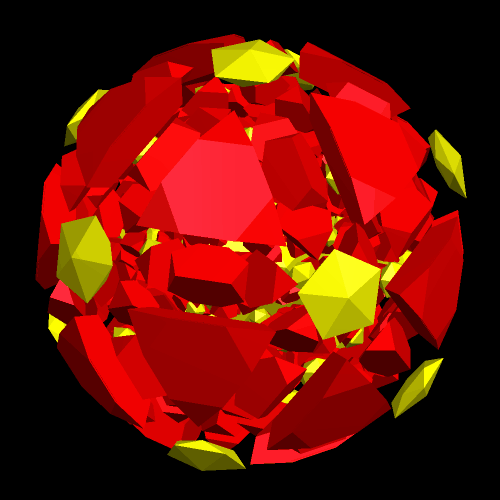One of the regular 4-dimensional polytopes, or polychora, is called the 600-cell. If you truncate it, you get the figure above, called “23-tex” for short. Its unit cells are 600 truncated tetrahedra, as well as 120 icosahedra. As shown above, you see only the cells, with space between them so you can see them, and vertices and edges rendered invisible. If the vertices and edges are shown, though, 23-tex looks like this:
Since these are four-dimensional figures, it’s not possible to see what these really look like all at once, in hyperspace, because you, the observer, are trapped in a universe where only three spatial dimensions are easy to perceive. That’s one reason I’m showing these figures with them rotating — as they spin, in hyperspace, the “slice” of the shape which appears as a three-dimensional projection, in our universe, changes. Over time, then, you get to see it all — but, in hyperspace, its appearance would be different. If you try to imagine a living creature living inside a horizontal Euclidean plane, and this creature trying to picture a three-dimensional shape, that can help with understanding the nature of the problem that arises when three-dimensional beings try to picture anything involving a fourth spatial dimension.
Three-dimensional polyhedra can be unfolded, and shown as flat “nets” made out of polygons. Well, what does the “net” of a four-dimensional polytope look like? The answer is one dimension “down” from four: the net is a bunch of three-dimensional polyhedra, stuck together at their faces, just as the nets of polyhedra are made of polygons joined at their edges. Here’s one possible net for 23-tex:
The three images above were produced using Stella 4d: Polyhedron Navigator, software you may try for yourself, here.



Ooh, you could put this in a Marvel movie!
LikeLike